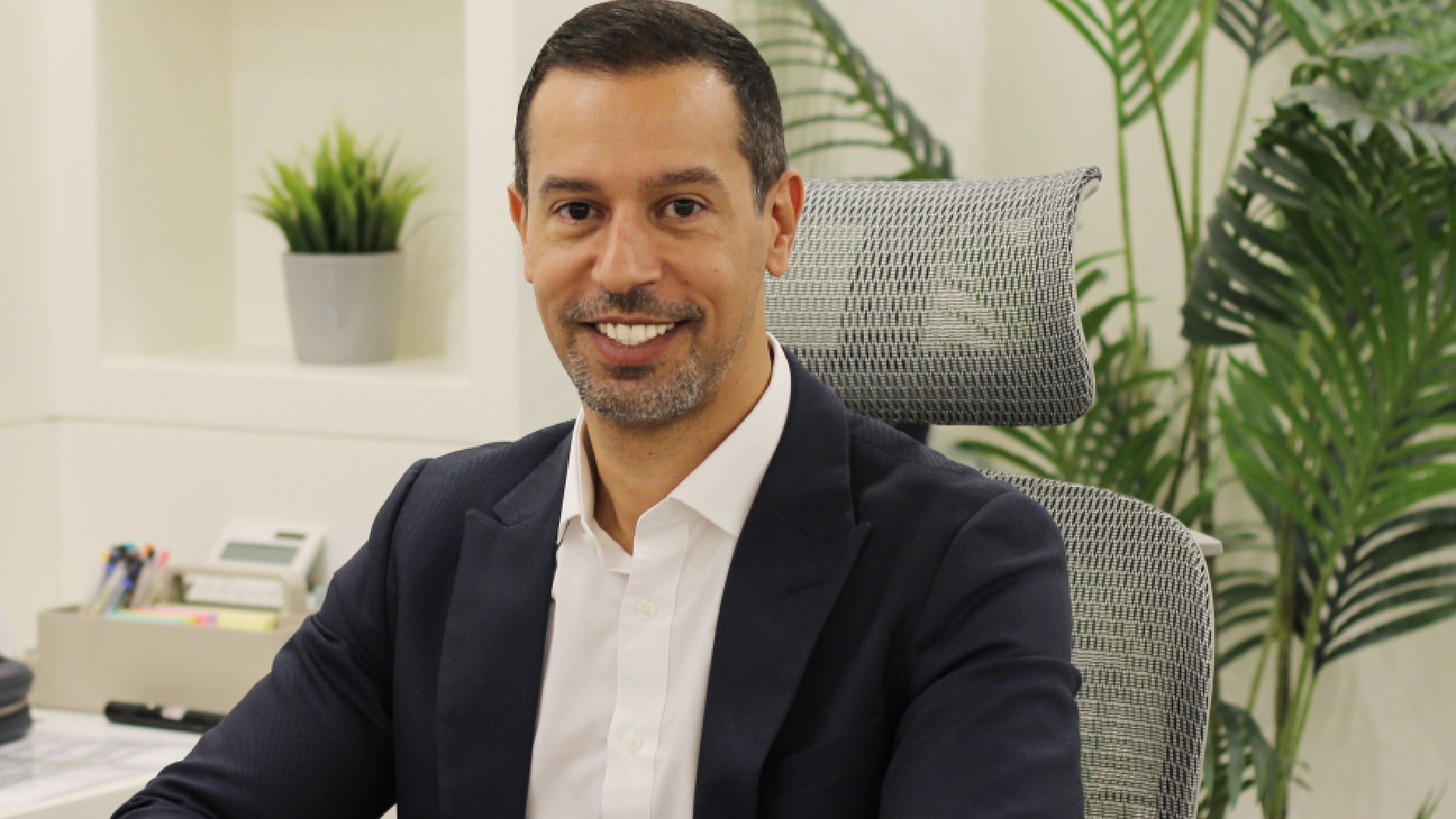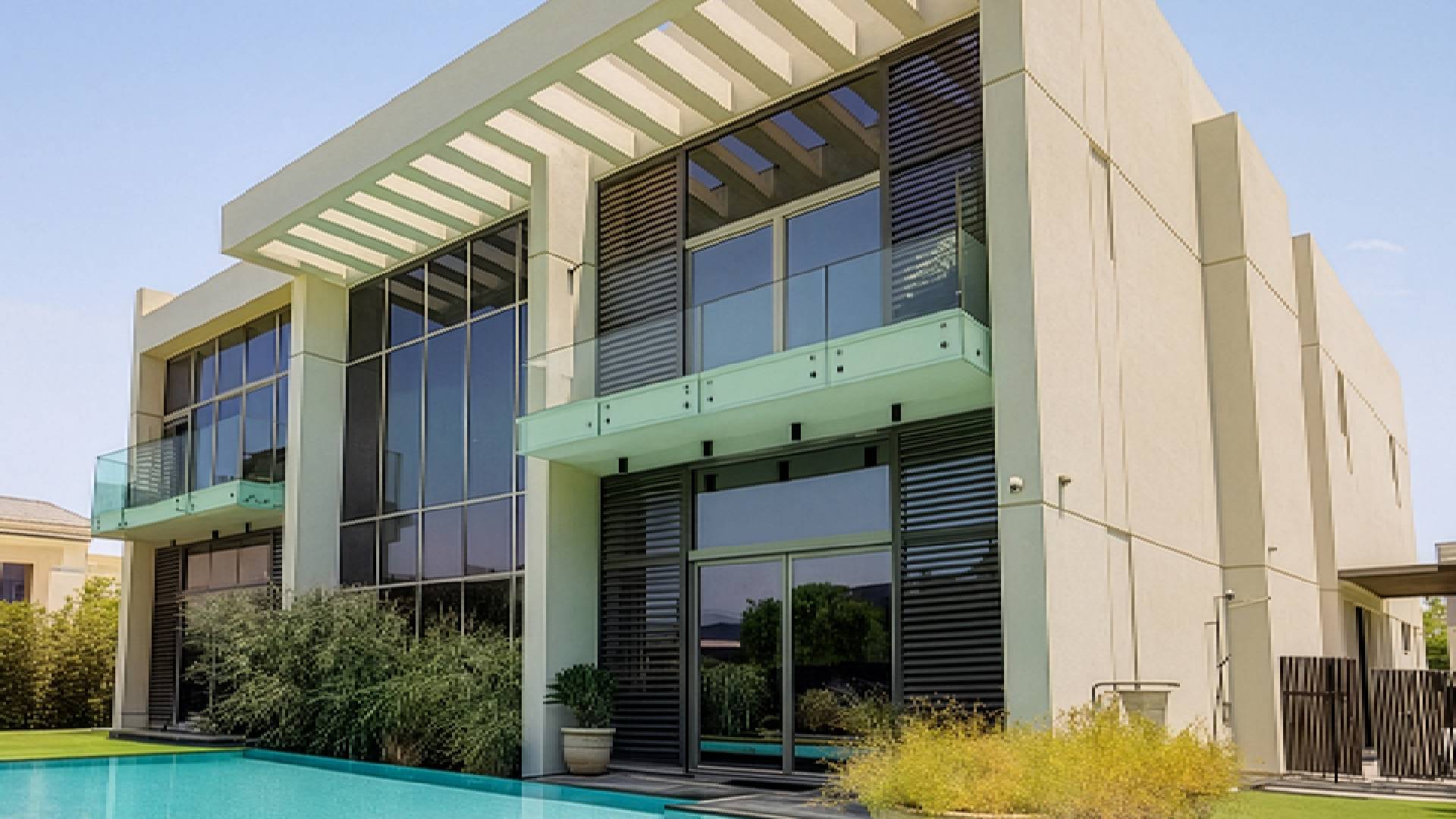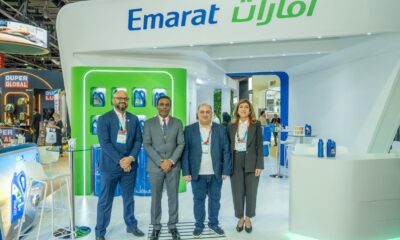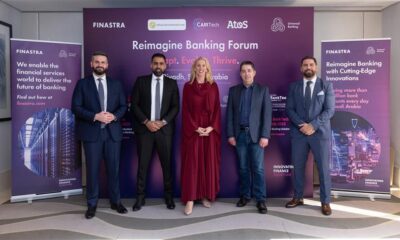Home Feature
Identifying a Good Living Space: What Makes a House a Home?

By Co-founders of Elysian Developments – Masood Naseeb and Noman Mahmood
A house is often considered one of the most significant investments in a person’s life, turning that house into a home is what truly matters. A home has more than four walls and a roof—it’s a space that nurtures, comforts, and reflects the personality of its inhabitants. Finding the right living space requires careful evaluation, ensuring that it not only meets practical needs but also resonates emotionally.
Here’s how to identify a good living space and transform it into a home that feels truly yours.
Location and Connectivity
Choosing the right location is crucial when finding the perfect home, as it influences daily convenience, commute times, and access to essential services. A balance of locale and landscapes – think beach fronts, sea views, and serenity along with modern amenities and infrastructure in the neighbourhood makes attractive options for residents. Even for a developer like us, we look at the best of connectivity, area development, and infrastructure that we can offer customers to choose from. The pristine beaches, beautiful green landscapes, scenic waterfront promenades, nine marinas, two golf courses, and a stunning new mall in Dubai Islands was an ideal location for our debut project, Esmé Beach Residences. It pairs the tranquility of beachfront living with excellent infrastructure, quick and easy connections to Downtown Dubai.
Space and Layout
Beyond location, the actual living space must align with individual and family needs. A well-designed home should offer space that is not only aesthetic but also functional. It should take into consideration the current and future requirements such as a growing family, a home office, or additional storage. There is a growing trend now for most residents who are looking for a space that offers them a holistic lifestyle and well-being. Well-being is an integral cornerstone for our business too, reflecting the customers’ demand for a holistic and healthy lifestyle. This positioning fulfills the need in the market where well-being is purposefully woven into the architecture and design of our projects.
Amenities & Lifestyle offerings
Not only parks and recreational surroundings but amenities offered to bring a balanced lifestyle are one of the biggest asks for residents and investors. When we conceptualised Esmé, we wanted to ensure that the building itself can offer the best of well-being amenities. For example, our project will feature a central water filtration system for all residents along with amenities such as contrast therapy zones with saunas and cold plunges, as well as a rooftop 25-meter infinity pool with aqua cycling. Residents will also enjoy family pools with poolside cabanas, state-of-the-art fitness zones, outdoor CrossFit areas, and purified water systems, all of which reflect Elysian Developments’ focus on fostering a lifestyle of health and balance. While we have gone over and beyond to bring alive the best of amenities, there is a trend among buyers who are asking for more and better amenities that create an elevated lifestyle.
Quality of Construction and Maintenance
A home should be structurally sound and built with quality materials to ensure longevity and comfort. When assessing a property, consider factors such as durability and finishes, as high-quality flooring, doors, windows, and fixtures contribute to long-term value. Proper insulation and ventilation play a crucial role in maintaining energy efficiency and year-round comfort. Additionally, well-maintained water and electrical systems are essential to prevent future maintenance issues. Natural light and airflow should also be evaluated, as homes with well-placed windows and effective cross-ventilation enhance well-being while reducing reliance on artificial lighting and air conditioning.
Sustainability and Smart Living
A good living space is one that not only meets functional needs but also nurtures the soul. Identifying the right home requires assessing practical elements such as location, layout, and construction quality, but the true transformation happens when the space resonates emotionally. A home should be a sanctuary—where memories are created, comfort is felt, and personal style is reflected. Whether through décor, family traditions, or simply the feeling of safety and belonging, a house becomes a home when it aligns with the heart and mind of those living in it.
Home Feature
DESIGNING INTERIORS WITH ADAPTABILITY IN MIND ACROSS THE GULF

By Sherif Nagy, Chief Executive Officer of ME FITOUT
Across the Gulf, design has always been driven by a combination of adaptation and aesthetics. In recent years, as the region has begun encountering shifting weather patterns, new consumer preferences and industry challenges, the role of interior fit-out design is fast expanding. Rather than being a secondary element in the built environment, fit-out design has now evolved into a strategic factor central to advancing the Gulf’s long-term climate resilience and shaping future-ready, high-performance interiors.
Today, the way we design, construct, and maintain interiors directly impacts how well buildings can withstand environmental pressures while maintaining comfort for occupants. Modern interiors are increasingly engineered to handle higher cooling loads, regulate elevated humidity, and support efficient maintenance cycles, all while meeting the growing demand for sustainability.
For fit-out professionals, resilience is no longer a luxury but a necessity. Beyond enhancing operational efficiency, it plays a key role in long-term cost management and asset longevity. As regional governments accelerate their sustainability and net-zero agendas, the fit-out industry’s ability to integrate climate-adaptive strategies will define its relevance in the coming decade.
Choosing the right materials is one of the most effective ways to adapt to extreme climate conditions. The Gulf’s harsh weather demands materials that can withstand heat, moisture, and corrosion without compromising on aesthetics. Studies on Gulf high-rise buildings have shown that even simple improvements to the building envelope and interior materials can cut energy demand by up to 60 per cent in existing structures and nearly 70 per cent in new ones.
Thermally reflective finishes, corrosion-resistant metals, and materials with low volatile organic compounds (VOCs), that maintain air quality under constant air-conditioning loads, are becoming the new standard. As clients increasingly demand environmentally responsible solutions, the industry must focus on materials that balance durability, sustainability, and performance under extreme conditions.
Even though fit-out work focuses on interior environments, designers have a surprising amount of influence on energy performance. Passive design principles such as smart partitioning to enhance airflow, reflective surfaces to reduce heat absorption, and integrated shading can significantly reduce the burden on HVAC systems. With urban heat islands intensifying across Gulf cities, every interior layout and material choice must now serve the dual purpose of aesthetic appeal and thermal efficiency.
Meanwhile, the Gulf’s real estate market is evolving at an unprecedented pace. With progressive regulations, dynamic tenant expectations, and rapid technological advancements, buildings are becoming more responsive and future-oriented. As a result, interiors are now designed with adaptability in mind, enabling spaces to evolve sustainably as needs and innovations continue to arise.
Modular joinery systems, raised flooring, and flexible lighting grids allow spaces to evolve with minimal disruption and waste. This flexibility improves operational resilience as well as supports environmental goals by reducing material waste over time. In a future defined by constant change, modularity is the foundation of longevity.
Resilience in the Gulf region will also be powered by data. Smart sensors that monitor temperature, humidity, and occupancy patterns can automatically adjust lighting and cooling, maintaining energy efficiency while ensuring occupant comfort. IoT-enabled systems can even detect early signs of humidity-related issues, such as mould formations, before they escalate into major financial concerns. As high energy consumption remains a regional challenge, integrating technology into fit-out design is essential. These innovations align with the UAE’s Net Zero 2050 strategy and broader GCC sustainability goals, creating interiors that are intelligent, adaptive, and environmentally responsible.
Leading fit-out firms in the UAE are shifting their focus from cost to value. This is because clients today are more aware of lifecycle costs, operational risks, and ESG commitments. A fit-out that demonstrates measurable energy savings, reduced maintenance needs, and climate-ready design meets compliance and also gains a clear competitive edge.
In the years ahead, resilience will become a key commercial differentiator in the marketplace, influencing investment decisions and brand reputation alike. To future-proof interiors, fit-out specialists must embrace climate-risk modelling during the design phase, assessing how materials and layouts will perform under projected 2035–2040 conditions. Collaboration with suppliers who provide verified data on material performance in Gulf environments will be essential to ensure that sustainability claims translate into real-world durability.
By combining passive design, modular systems, and intelligent monitoring, the Gulf’s fit-out industry has the opportunity to meet sustainability standards as well as set new benchmarks. In doing so, it will help shape a new era of resilient, climate-conscious interiors that adapt as the region’s vision for sustainability evolves.
Home Feature
RESPONSIBILITY IS THE NEW INGREDIENT IN KITCHEN DESIGN

Attributed by Selva Kumar Rajulu, Managing Director, Nolte FZE
Across the built environment, design is entering an era defined by accountability. The kitchen is at the heart of this, as one of the most resource-intensive parts of any building. From forests to finished, choices in material sourcing, production, and longevity have become a barometer of how seriously the industry treats sustainability.
In the UAE, this shift is supported by national frameworks like Net Zero 2050 and the Energy Strategy 2050, which aim to cut carbon emissions and reach 50% clean energy by 2050. Dubai Green Building Regulations, the Dubai Municipality Green Building Regulations, and the growing number of LEED-certified developments have made responsible design the new standard for both developers and manufacturers.
The heart of sustainable design
The construction sector accounts for nearly 40% of global carbon emissions, making material choice a powerful lever for change. As such, kitchens’ value is no longer judged only by finishes but also by carbon footprint, recyclability, and contribution to healthier indoor air quality. New-gen kitchens must combine aesthetics and functionality with ethical material use, low-emission production, and circularity. Every surface, fixture, and joint carries a story of how resources were sourced, processed, and designed for long-term use. This is increasingly prioritised by developers and homeowners as reports forecast demand for green buildings in Dubai alone to rise by 25% this year.
Certified sourcing as a foundation
Wood remains the backbone of kitchen manufacturing, with more than 70% of designs using wood or wood-based materials. This makes responsible forestry critical to preserving global biodiversity and maintaining the credibility of sustainable design. Certifications such as FSC® (Forest Stewardship Council) and PEFC (Programme for the Endorsement of Forest Certification) are now the international benchmarks for ethical origin of materials.
Across the region, these standards are becoming decisive factors in project specifications. Data from the FSC shows that between 2018 and 2021, the number of certified forest areas increased by 31%, a sign that sustainable sourcing is essential for climate resilience and market access.
By choosing certified products, builders and manufacturers ensure each certified kitchen contributes to global conservation efforts and reinforces the industry’s transition toward transparent, verifiable value chains.
A lifecycle approach to kitchen manufacturing
Responsibility is most effective when viewed as a continuous cycle rather than a single design choice. It begins with selecting responsibly managed raw materials and extends through manufacturing powered by renewable energy, resource-efficient logistics, and thoughtful packaging.
In production, the focus is on durability, repairability, and recyclability. Energy efficiency and material optimisation are supported by reusing by-products. For instance, Nolte utilizes wood waste for 98% of its thermal energy needs. Building on this, strategic energy management helps improve overall efficiency, reduce costs, and lower greenhouse gas emissions.Regional sourcing and digitally optimised transportation help minimise emissions. Across the sector, climate-neutral manufacturing initiatives and industry pacts aligned with the UN’s 1.5-degree target are shaping how furniture is produced and assessed. Packaging waste is transferred to certified partners for recycling, with disposal certificates issued to ensure full compliance. Even at the point of sale, there is a shift toward informed retail experiences that promote awareness of material health and lifecycle impact.
At the end of the chain lies circular design: ensuring that kitchens can be repaired, recycled, or repurposed rather than discarded. Each of these stages connects environmental care with responsible business practice, forming the foundation for a genuinely sustainable design economy.
Building value through longevity
Green buildings in the UAE are projected to grow from US$6.94 billion in 2024 to US$15.5 billion by 2032, driven by regulation and consumer demand. Within that growth, interior elements such as kitchens play a pivotal role in achieving ESG targets and maintaining compliance with evolving green codes.
Durability and quality are also financial strategies. Products built to last reduce replacement costs, limit resource consumption, and build confidence among clients. Similarly, certified sourcing strengthens brand reputation, demonstrating that sustainability reporting and craftsmanship can coexist. The result is a more resilient value chain that benefits investors, developers, and end users alike.
As design evolves, responsibility will remain its most enduring ingredient. Kitchens that respect natural resources, reduce emissions, and stand the test of time are the blueprint for a sustainable future in the built environment.
Home Feature
HOW REAL ESTATE BROKERS ARE BECOMING TRUSTED ADVISORS IN 2025

Attributed by Olga Pankina, Chief Operating Officer, Whitewill Dubai
Dubai’s real estate market crossed AED 522.5 billion ($143 billion) in transactions during 2024, a 27% jump on the previous year, according to the Dubai Land Department. This surge highlights not just rising volumes but growing complexity. Knight Frank reports that more than 40% of ultra-high-net-worth individuals in the GCC now view real estate as a key component of diversified wealth portfolios rather than simply lifestyle purchases. In response, brokers are evolving from dealmakers into strategic advisors who help clients structure long-term wealth strategies.
How brokers are adapting
Market complexitySavills data shows Dubai launched more than 70 projects in 2024, ranging from branded residences to creative payment schemes and mixed-use formats. Brokers are responding by building specialist teams that analyse developer track records, payment plan risks, and brand value premiums. They are no longer just introducing projects—they are running scenario models on potential delays, interest rate movements, and projected resale values to advise clients which launches fit their investment strategy.
Global benchmarkingWith Dubai’s rental yields averaging 6.8–7.5%, far stronger than the 3–4% seen in London or Paris, brokers are positioning themselves as comparative analysts. They present clients with side-by-side yield scenarios, factoring in currency exposure and financing costs across markets, so investors can decide whether Dubai should serve as a core yield play or be complemented with international assets for balance.
Policy and regulatory shiftsBy the end of 2024, the UAE had issued more than 158,000 Golden Visas, creating new investment dynamics. Brokers now advise clients on selecting properties that can qualify for residency, structuring ownership to maximise visa eligibility, and aligning investments with long-term family relocation plans. As new sectors like gaming expand in Ras Al Khaimah—anchored by Wynn Resorts’ 2025 opening—brokers are also flagging secondary growth corridors to investors, integrating policy insights into their advisory.
Trusted advisor model
Deloitte’s surveys show that 72% of GCC investors now expect brokers to advise on taxation, ownership structures, and exit strategies. Leading firms have broadened their offerings to include full lifecycle support: arranging financing, overseeing management and leasing, and planning exit timing. Some brokerages integrate concierge services, legal counsel, banking contacts, family office networks, so clients interact with a single advisor orchestrating the entire ecosystem.
Regional broker strategies
Dubai and Abu DhabiThe Dubai Land Department notes that 36% of all transactions in 2024 were for ready properties, signalling investor preference for immediate income-producing assets. Brokers are shifting accordingly, building ready-asset portfolios and negotiating rental agreements and management contracts alongside the sale. In Abu Dhabi, they are emphasising projects with infrastructure certainty, guiding clients toward assets that can deliver both lifestyle and reliable returns.
Saudi ArabiaVision 2030 has placed over a trillion dollars’ worth of projects into the pipeline, but execution quality varies. Brokers are acting as filters, vetting projects based on developer capability, financing security, and infrastructure backing before presenting them to clients. They frequently run due diligence with engineering consultants and local legal teams to protect investors from speculative risks while highlighting projects aligned with government priorities.
OmanCBRE recorded 8–10% price growth in Muscat and Muttrah in 2024, spurred by early foreign demand. Brokers here are counselling clients against pure speculation, instead positioning Omani assets as long-term diversification plays. They provide guidance on ownership regulations, residency eligibility, and exit options, ensuring foreign investors understand the timelines and obligations before entering the market.
Skills for modern brokers
Financial fluency is becoming a baseline skill. Brokers are expected to present internal rates of return, cash-flow projections, and exit models. In premium Dubai projects, IRRs of 12–14% are achievable under active management, but only if brokers can demonstrate scenarios clearly.
Additionally, JLL forecasts that by 2026, over half of MENA property transactions will rely on AI-driven dashboards. Many brokers are already using predictive analytics to assess submarket vacancies and rental trends. With more than 35% of Dubai’s buyers coming from abroad, cross-border fluency—tax treaties, cultural norms, legal frameworks—has become part of the broker’s toolkit. None of this is possible without network capital: relationships with developers, bankers, and regulators that give brokers the leverage to deliver better outcomes for clients.
Market insight
Knight Frank highlights a shift among GCC investors from single-unit acquisitions to multi-asset strategies. Brokers are helping clients pair prestige villas for lifestyle and residency benefits with mid-market rental units generating 6–9% yields. Others are designing “exit packages,” advising on resale timing, tenanting strategies, or even property repurposing if liquidity dries up, so portfolios remain resilient.
Forward outlook
PwC estimates that $2.5 trillion in UHNW capital will move across borders by 2030, and brokers will be positioned as the private bankers of real estate. Some firms are already experimenting with hybrid compensation models, retainers plus performance fees, to reflect this shift from transaction to long-term wealth management.
As yields in Dubai stabilise around 5–7% by 2026–27, investors will value strategy over opportunism. The brokers who thrive will be those who build trust as advisors, helping clients protect, grow, and align property with broader wealth ambitions. The industry is moving decisively away from transactions. Strategy is the new currency.
-

 Tech News1 year ago
Tech News1 year agoDenodo Bolsters Executive Team by Hiring Christophe Culine as its Chief Revenue Officer
-

 VAR8 months ago
VAR8 months agoMicrosoft Launches New Surface Copilot+ PCs for Business
-

 Tech Interviews2 years ago
Tech Interviews2 years agoNavigating the Cybersecurity Landscape in Hybrid Work Environments
-

 Tech News5 months ago
Tech News5 months agoNothing Launches flagship Nothing Phone (3) and Headphone (1) in theme with the Iconic Museum of the Future in Dubai
-

 Tech News2 years ago
Tech News2 years agoBrighton College Abu Dhabi and Brighton College Al Ain Donate 954 IT Devices in Support of ‘Donate Your Own Device’ Campaign
-

 Editorial1 year ago
Editorial1 year agoCelebrating UAE National Day: A Legacy of Leadership and Technological Innovation
-

 VAR1 year ago
VAR1 year agoSamsung Galaxy Z Fold6 vs Google Pixel 9 Pro Fold: Clash Of The Folding Phenoms
-

 Cover Story9 months ago
Cover Story9 months agoUnifonic Leading the Future of AI-Driven Customer Engagement























